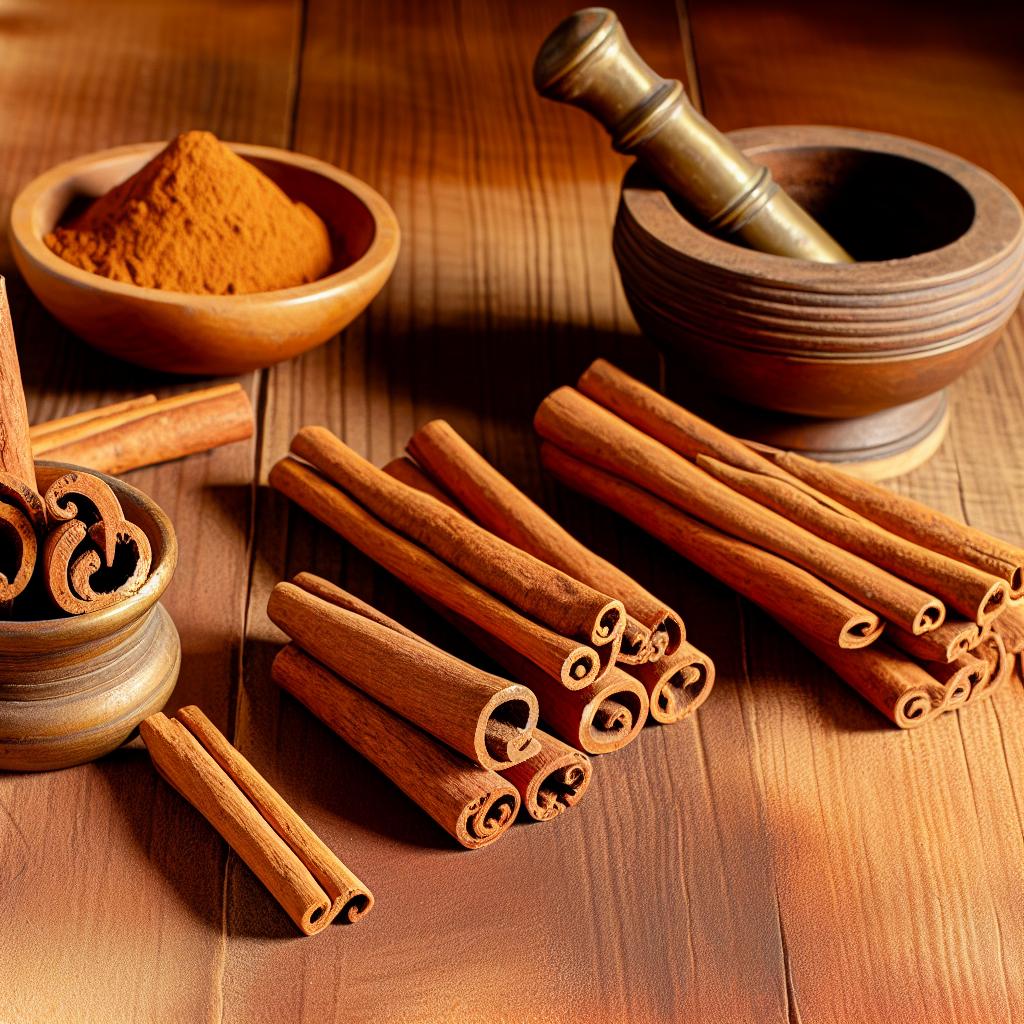
Introduction to Cinnamon
Cinnamon is a widely recognized spice with a delightful aroma and flavor, derived from the inner bark of trees in the Cinnamomum genus. It has been an integral part of human culture for centuries, serving both culinary and medicinal purposes. The historical importance of cinnamon, along with its current applications across global cuisines, underscores its significance.
Types of Cinnamon
Cinnamon comes in various forms, but the two most prevalent types are Ceylon cinnamon and cassia cinnamon. Each type offers unique characteristics and flavors, which contribute to their differing uses.
Ceylon Cinnamon
Ceylon, often described as “true cinnamon,” is indigenous to Sri Lanka and parts of southern India. It is distinguished by its lighter color and milder, more complex flavor. The delicate nature of Ceylon cinnamon makes it particularly suitable for desserts and sweet dishes, where subtlety and nuance are desired. Its fragile layers can be easily ground, and its taste is often preferred by those who appreciate a softer, gentler spice.
Cassia Cinnamon
Cassia cinnamon, contrasting with Ceylon, is thicker, darker, and has a more robust and intense flavor profile. Primarily sourced from Indonesia and China, cassia stands out with its strong, spicy essence. This variant is generally less expensive and more readily available in supermarkets, making it a common choice for both commercial and home cooking. Cassia’s bold taste lends itself well to savory dishes, offering warmth and depth to varied recipes.
Culinary Uses
The versatility of cinnamon extends to numerous culinary applications. In baking, it is a cherished ingredient that enriches sweet treats like apple pies, cinnamon rolls, and cookies. The sweetness of cinnamon not only enhances the flavor profile of these desserts but also adds a comforting warmth that many find irresistible.
Cinnamon’s role is not limited to sweets; it is an essential element in savory cooking, appreciated across diverse cuisines such as Middle Eastern, Indian, and Mexican. In these culinary traditions, cinnamon is used to add complexity to stews, curries, and meat dishes. Its ability to blend and harmonize with other spices like cumin, coriander, and cloves makes it a staple in spice blends like garam masala and curry powder.
Health Benefits
Cinnamon is not just a flavorful addition to food; it is also esteemed for its potential health benefits. Containing anti-inflammatory and antioxidant properties, it may help manage various health issues. Some research suggests cinnamon can play a role in controlling blood sugar levels by improving insulin sensitivity, making it of interest to people with diabetes or at risk of developing it.
Its antioxidant properties contribute to heart health by potentially reducing cholesterol levels and improving overall cardiovascular function. As with any supplement, it is crucial to consume cinnamon in moderation, integrating it into a balanced diet.
Scientific Research
Research on cinnamon is continually evolving, with many studies investigating its various health implications. For example, there are studies examining its efficacy in managing blood sugar levels and its impact on lipid profiles. The antioxidant and anti-inflammatory constituents of cinnamon are subjects of particular interest to researchers exploring its broader metabolic benefits.
The scientific community remains engaged in understanding the full scope of cinnamon’s health potential. For more in-depth analyses, individuals interested in the medical properties of cinnamon can consult scholarly articles and publications available from credible sources like the National Center for Biotechnology Information.
Growing and Harvesting
Understanding the cultivation and harvesting of cinnamon adds another layer to appreciating this remarkable spice. Cinnamon trees thrive in tropical climates and require conditions similar to their native habitats. The growth process entails nurturing young seedlings, which, once mature, have their bark skillfully peeled away to yield cinnamon sticks.
In the context of Ceylon cinnamon, the bark is peeled from the inner layers of the tree, then rolled into quills and left to dry. The lighter, more fragrant result is testament to the meticulous harvesting process that distinguishes it from cassia. In contrast, cassia cinnamon involves harvesting the thicker, outer bark, resulting in a bolder flavor and darker appearance.
Conclusion
Cinnamon’s illustrious history and multifaceted applications affirm its status as a globally cherished spice. From ancient times to modern-day usage, it enriches food and offers potential health benefits. Understanding the different types of cinnamon and their distinct characteristics can empower consumers to make informed choices about how to incorporate this versatile spice into their diets and lifestyles.
As exploration into its medicinal attributes continues, the historical narrative of cinnamon enriches, promising further discoveries in both culinary and scientific realms. Whether in the kitchen stirring up recipes or in labs conducting research, cinnamon continues to leave a significant mark across cultures and disciplines.

